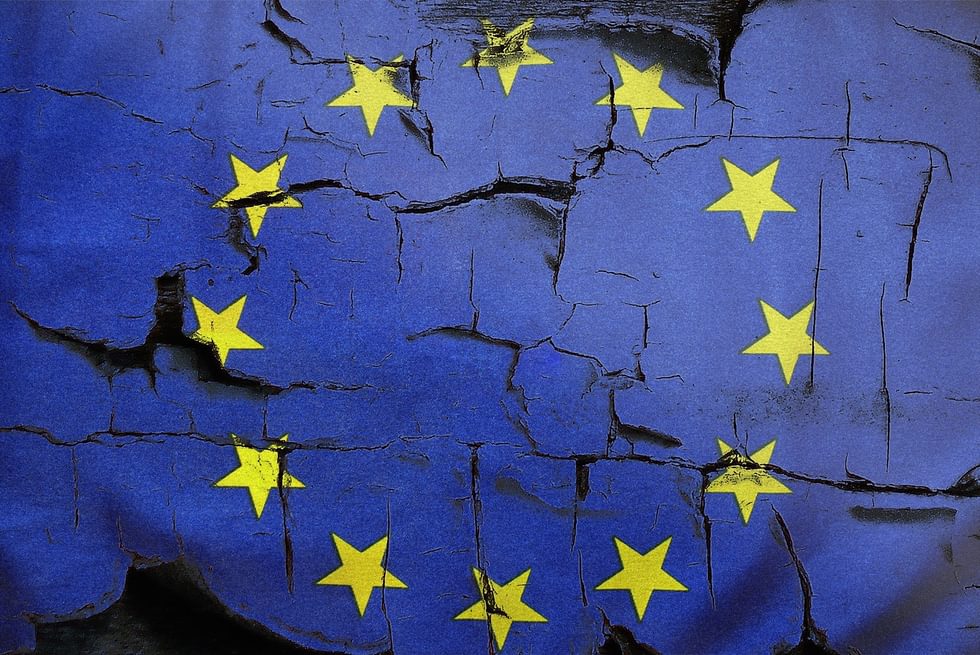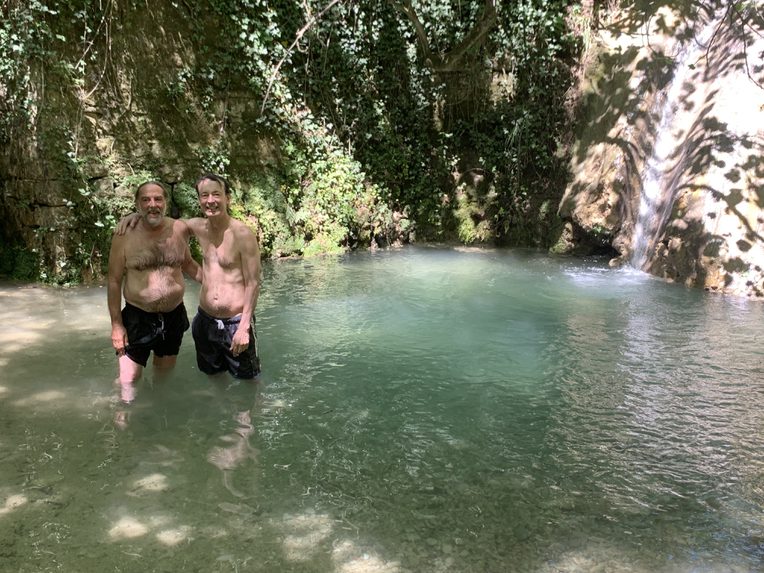The Call of the Bell Tower
From the Series: Europe in the Balance
From the Series: Europe in the Balance

Back in the early 1970s, I went to seventh grade in the Italian village of Fiesole, just above Florence. Between the kids smoking in the alley and a priest who inveighed weekly against masturbation and divorce, the school could have come from Fellini’s Amarcord. My best friend, a boy named Giovanni, descended from stonemason stock, men who cut the pietra serena from the Tuscan hills for the great Florentine palaces. Giovanni lived with his parents and grandparents in a small apartment off the piazza, a working-class family of modest means. Giovanni’s grandmother dressed in black in the manner of an older peasant Italy not so far removed from World War II’s end. My school friends showed me a spot in the forest where the retreating Germans executed partisan resistance fighters.
I reconnected with Giovanni a few years ago. A government office worker, the first in his family not to labor in the quarries, he lives in the same Fiesole apartment where he was raised. His wife Paola works at a shoe store, and, although a bit better off than in the old days, they do not have much money. Giovanni’s great passion is taking nighttime pictures of stars and meteors, stationing his tripod in the blackness of a country field. His photographs marvelously document celestial movements in the tradition of Galileo, that most famous Florentine stargazer.
People like Giovanni vanish in crisis talk about Europe. In line with our self-appointed disciplinary role as chroniclers of sorrow and suffering, we anthropologists have focused mostly on the continent’s dark side—abandoned refugees and rising neo-fascism; Brexit and bombings; national anxieties and local exclusions. To bear ethnographic witness is a worthy enough exercise, given the horrors of the African migrant passage across the Mediterranean and too much else wrong in Europe today. Yet crisis and change are not the whole story. The tale of modern Europe is also one of stability and continuity, and the mentality that Italians call campanilismo—belltowerism, namely the habit of living your life close by the bell tower of your natal town.
Giovanni is a case in point. A few years ago, I invited him to the Palio, the famous medieval horse race in Siena. I should have known better, because being from Fiesole, close by Florence, makes Giovanni Florentine, and the Florentines and Siennese have hated each other for centuries. He politely declined my invitation, dismissing Siena with the worst possible Italian insult. “I’ve heard the food is very bad there,” he said.
It’s not that Giovanni is an unknowing provincial. He makes weekend trips to the Alps and lived in Norway for a time. From early-twentieth-century Sicilian peasants to recent physics PhDs, many Italians have relocated for good across oceans. But the pull of family, custom, and the comforts of permanence leads millions of others to stay in the same towns and neighborhoods as their forefathers and foremothers. Belltowerism has also kept in Fiesole another of my seventh grade friends, Leonardo, a computer technician whom my wife says looks like George Clooney. He waves at me from his apartment balcony whenever I visit.
All Europe abounds in Giovannis and Leonardos who have come back home to settle—or who never left in the first place. This bespeaks very different sensibilities about personhood and the good life from American ones. Here we live under the mark of an imperializing frontier mythology of individualism, mobility, and an obsession with improving self and society. By contrast, as much as Europe has been built from war, trade, and hybridizations, it is truly “old country.” The wish to break away, to reinvent oneself is weaker in places like Italy where the weight of custom and past generations holds strong sway. “Old attitudes of thought and action, resistant frameworks dying hard, at times against all logic,” wrote Fernand Braudel (1958, 733), the great champion of a long view of world history.
That living presence of the past makes Italy’s brand as a tourist destination. We wander the medieval Venetian alleys; marvel at the Florentine Duomo; and enjoy the other seemingly timeless Italian pleasures of Lonely Planet and Rick Steves’s fables. Many Italians have a more ambivalent relationship to their local customs. They like their town’s holiday foods and the August beach vacations, but not the corruption and nepotism also commonplace. “A great place to be a tourist, not to live,” said an architect I met last year in the town of Conegliano, near Venice. But he has resettled there after spending time away in Berlin and New York.
We humans like to flatter ourselves that our own time is a decisive turning point for humanity’s fate. To the migrant on the sinking boat or the nightclub goer crouching to escape ISIS gunfire, these last few years can indeed feel like the most perilous of times. Still, as any longer view reminds us, the continent was ripped apart barely more than half century ago by a war that left millions dead and the threat of a Nazi victory. Europe’s present-day situation does not seem so fraught by that standard, despite the habitual pot-stirring panic of the pundits, the prophets, and the demagogues.
Who knows how long belltowerism will last? It’s striking how white much of Europe remains by comparison to the United States, but the great migrations from the Global South could yet transform the continent for good. Swiss glaciers have already melted, and, before long, climate change may well materialize into something more than the favorite worry bead on the rosary of the liberal affluent classes. There are no guarantees, as the greatest modern Italian thinker, Antonio Gramsci, insisted from his fascist prison cell.
Our only certainty that remains is that life is as fleeting as it can be beautiful. Giovanni and I are greying; he’s had cancerous parts of both kidneys removed. That hasn’t kept him from his cigarettes or his Chianti, or dimmed his little boy’s smile. When we are together, we wonder at how our memories of little things still seem near despite the passage of so much time. He gives me the double-cheeked Italian goodbye kiss and the bristles of his beard feel like the thistles down in the fields where we used to roam.

Braudel, Fernand. 1958. "Histoire et sciences sociales: La longue durée." Annales: Histoire et Sciences Sociales 13, no. 4: 725–53.